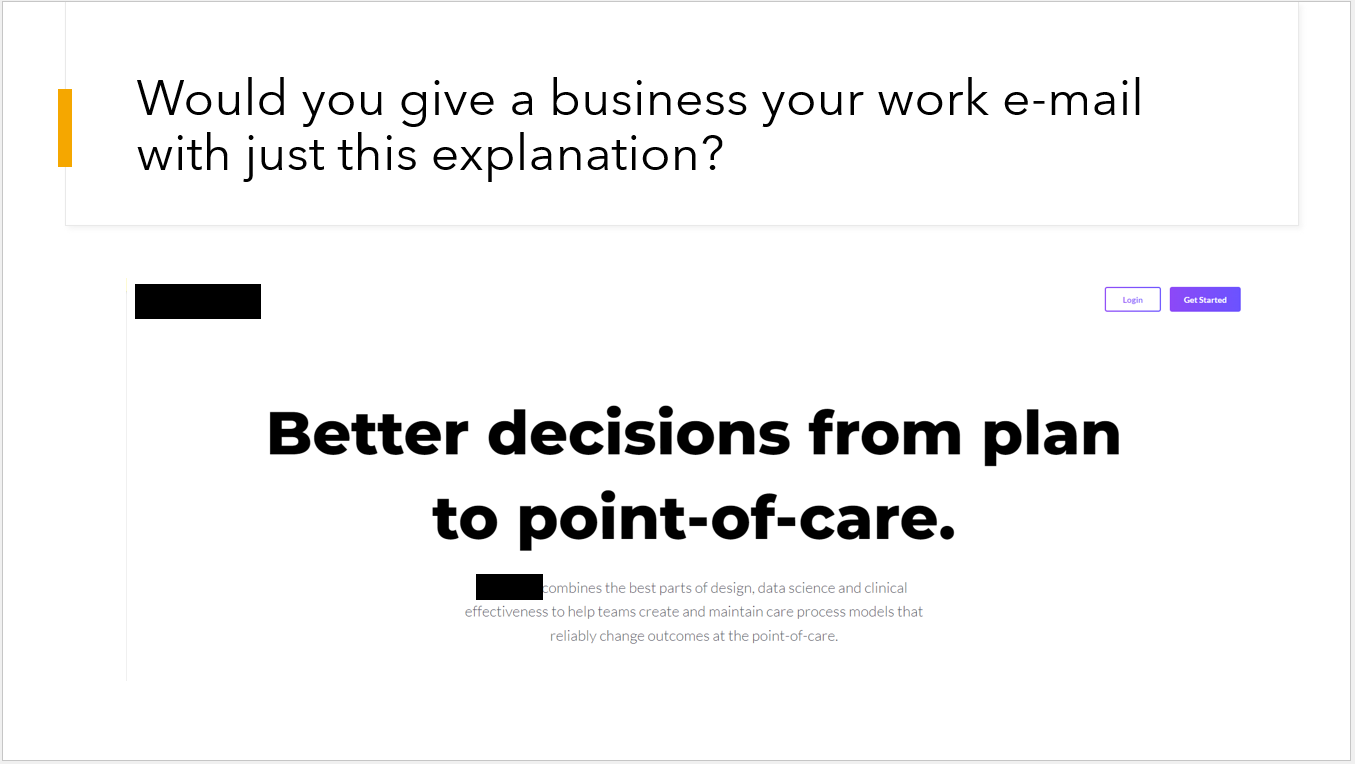The #1 skill I've needed to work in startups: jargon-free communication
Too much design terminology might be getting you rejected from startup jobs
Can you communicate your ideas to someone who knows nothing about design? If so, you may have an essential skill that startups (and small companies) need.
In today’s job market, startups and small companies offer the best job opportunities for mid-level designers, as you can gain valuable work experience and significantly impact how the final product looks and works.
However, if you’ve applied to some of these positions and gotten rejected, you might be making a critical mistake without realizing it: you might need to simplify your communication.
Many designers cater their portfolios (and communication) to other designers. They’ll talk about their process and methods that other designers know and may use design jargon without thinking twice.
That’s fine for large organizations since the person hiring them will likely have some design experience or knowledge. However, in these smaller organizations, that’s much less effective. While interviewers here may know a bit about UX and what they’re hiring for, making that assumption is the quickest way to lose your audience.
Let me walk you through my experience getting hired at a startup to show you why.
My most successful job interview ever involved 0 design terminology
One of my shortest and most efficient job hiring processes came when interviewing at a startup.
I talked with a recruiter once, then the founders, and then walked them through a design exercise before they sent me an offer that evening.
In the sample slide below, you might notice that I avoided using any design terminology to ensure that I communicated clearly.

As it turns out, they probably would have understood personas and journey maps, but I didn’t want to make that assumption: the founders were two busy doctors, so I had no idea what they knew about UX. I took my time explaining (and framing) their problems in jargon-free communication, and then they hired me.
Remember that communication is a two-way street. If your audience can only vaguely understand what you’re talking about, they won’t be that engaged. A simple and clear message beats a more detailed but hard-to-understand message every single day.
How to get started with this? Well, it involves communicating at your audience's level.




